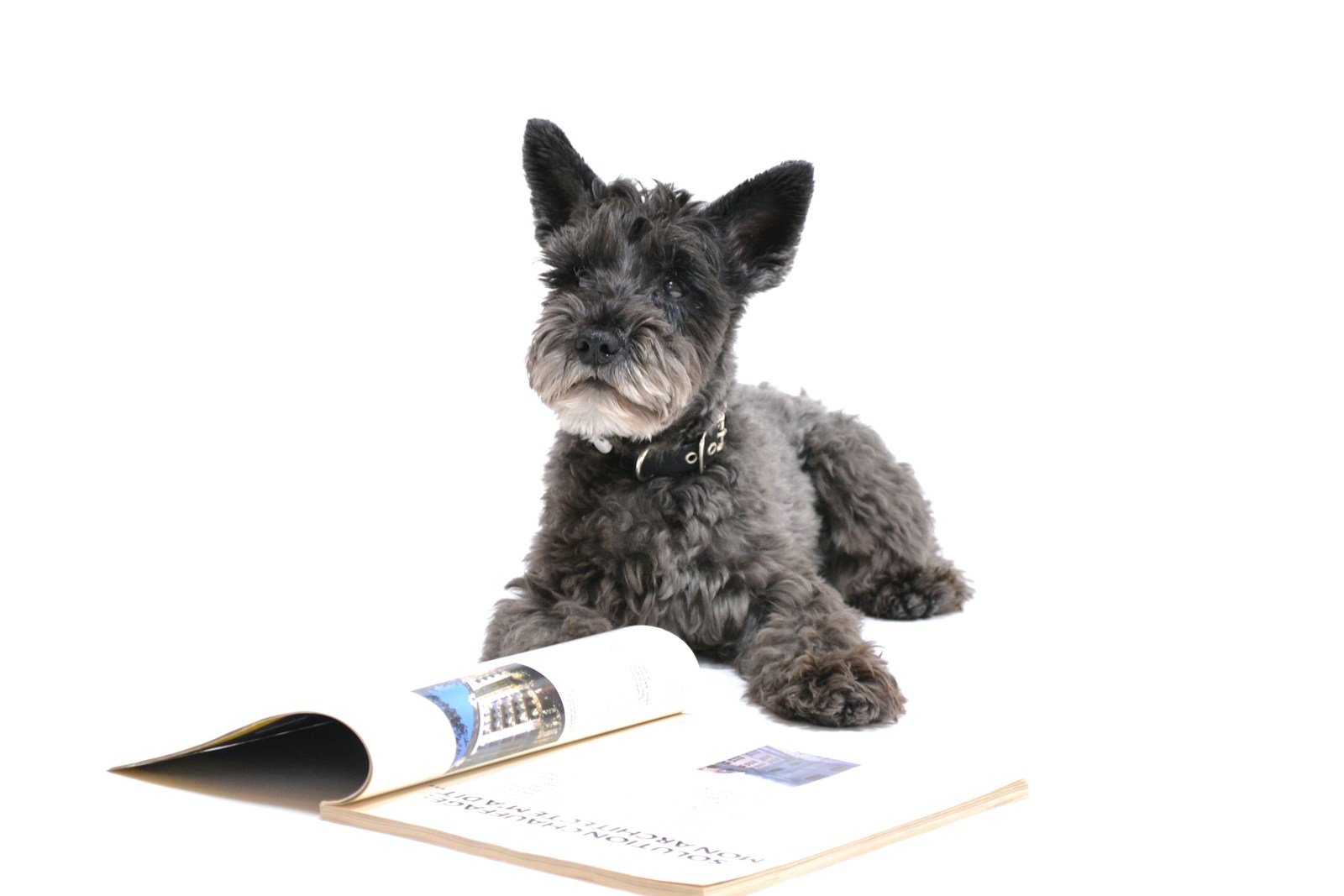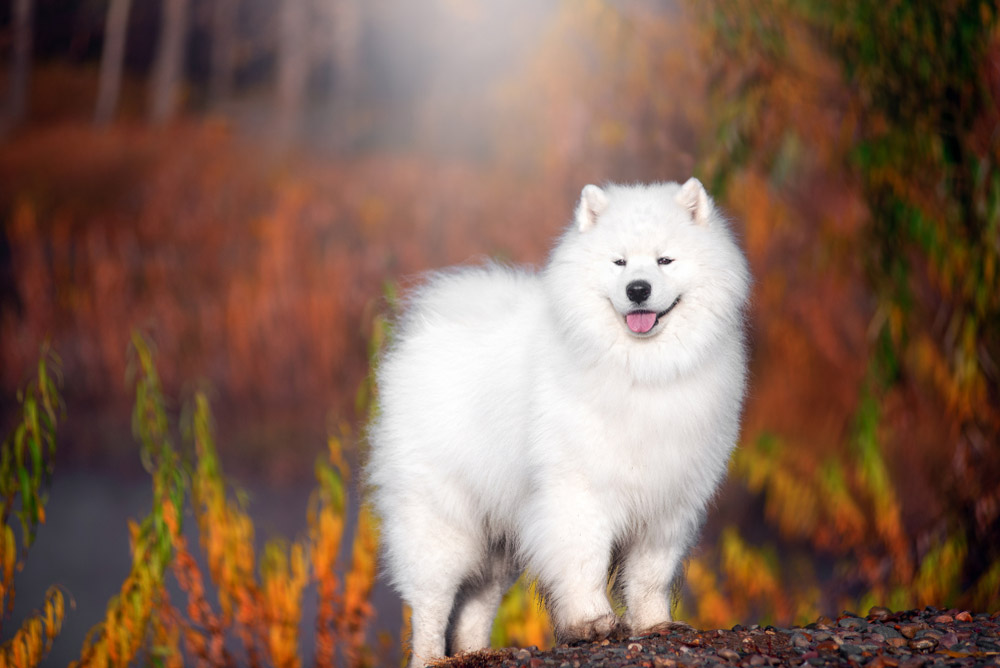Click Below to Skip Ahead
The Dandie Dinmont Terrier is a small Scottish dog in the terrier family with a distinctive appearance due to their long body and short legs. If you have the opportunity to get this breed but aren’t sure if they are right for you, keep reading as we dig in and discuss their personality, history, and health issues to help you make an informed decision about bringing a Dandie Dinmont Terrier into your home.
Breed Overview
Height:
8–11 inches
Weight:
18–24 pounds
Lifespan:
12–15 years
Colors:
Mustard, pepper
Suitable for:
First-time dog owners, families with older children, seniors, apartment dwellers, and allergy sufferers.
Temperament:
Affectionate, loyal, independent, stubborn, intelligent
The Dandie Dinmont Terrier is a popular dog in large part due to their unusual appearance, which features a long body and extremely short legs. They also have a large head with a “top knot” of hair that helps them stand out among other terriers. They are also affectionate and intelligent, with a bold streak that dates back to when they were hunters of otters and badgers. They are adaptable to various living situations, including small apartments, and have moderate exercise requirements that are easy to maintain.
Dandie Dinmont Terrier Characteristics

Dandie Dinmont Terrier Puppies
The Dandie Dinmont Terrier is playful and full of energy like any puppy, but their short legs can make it difficult to navigate certain areas, so you will need to watch them closely. You will also want to get your puppy into a routine of training, exercise, and grooming that will carry on into adulthood, to make those things easier. It’s also a good idea to let your pet spend as much time with other people and animals as possible so they are more comfortable around them as adults. The same is true for different environments.
Unfortunately, due to this breed’s rarity, it can be difficult to find a breeder specializing in the Dandie Dinmont Terrier. You can talk to your local veterinarians, pet stores, and animal shelters to see if there are any in your area, and you may be able to find one online. When choosing a breeder, always ensure that they provide the proper paperwork and put their dogs’ health ahead of profit.
Dandie Dinmont Terrier Origin & History
The Dandie Dinmont Terrier got started in the border region between Scotland and England in the 1700s. They got their name from Sir Walter Scott’s 1814 novel, “Guy Mannering.” In that story, a character named Dandie Dinmont owned six terriers named Mustard and Pepper, after their coat colors, and this breed became associated with him. Breeders developed the dog to hunt otters and badgers through rough, hilly terrain and pursue prey into their dens. They established the first breed club in 1875, and the American Kennel Club recognized the Dandie Dinmont Terrier in 1886.
Temperament & Intelligence of the Dandie Dinmont Terrier 🧠
The Dandie Dinmont Terrier is an affectionate yet independent dog with a courageous heart. They form strong bonds and are loyal and loving to all family members. They are also alert and make wonderful watchdogs without being overly barky. However, they can also have a stubborn steak and can be wary of strange animals. Intelligence is a hallmark of the breed, which can make them fun to train but challenging to keep engaged.
Are These Dogs Good for Families? 🏡
Yes, Dandie Dinmont Terriers can be excellent family pets. Their affectionate and loyal nature makes them wonderful companions for family members of all ages. They enjoy being a part of family activities and get along well with children, as long as they don’t handle them too roughly and respect the dog’s boundaries. They can also be great fun to train.

Does This Breed Get Along With Other Pets? 🐶 😽
Dandie Dinmont Terriers can get along well with other pets, especially if they spend time with them as puppies.

Things to Know When Owning a Dandie Dinmont Terrier
Food & Diet Requirements 🦴
Your Dandie Dinmont Terrier will require high-quality dog food that features real meat like chicken or turkey as the first ingredient. Avoid brands that use artificial colors and preservatives, and follow the portioning suggestions on the package closely. Your vet can give advice specific to your pet if you ask them. Limiting treats to no more than 10% of their daily calories is also crucial to avoid weight gain.

Exercise 🐕
Dandie Dinmont Terriers require moderate exercise to maintain their health and happiness. A daily walk or two lasting 30–60 minutes can help provide physical exercise and mental stimulation. Play sessions can also help strengthen your bond. However, keep their short legs in mind to ensure that they don’t accidentally over-exert themselves.
Training 🦮
Dandie Dinmont Terriers are intelligent dogs capable of learning a wide variety of tricks. However, they can have a stubborn streak that makes it hard to teach them. Starting while your pet is still young and holding short, scheduled sessions consistently can help get them into a routine that lasts into adulthood. Providing plenty of positive reinforcement in the form of treats, pets, and praise can keep them interested in learning, and holding your sessions after playtime can help them stay focused.
Grooming ✂️
The Dandie Dinmont Terrier has a distinctive coat that is a mixture of soft and hard hair, requiring regular brushing to prevent knots and tangles. Expect to brush them at least twice a week, and you may also need to take them in for a trimming every few months to keep their fur looking good. Every 2–3 months, they may also need a bath with a high-quality dog shampoo to bring back their shine and prevent odors. You will also need to trim their nails if you hear them clicking on the floor. Check the ears frequently for signs of wax buildup or infection, clean them if needed, and manually brush their teeth with dog-specific toothpaste as often as possible.
Health and Conditions ❤️
- Ear Infections
- Obesity
- Intervertebral disc disease (IVDD)
- Glaucoma
- Hypothyroidism
Minor Conditions
- Ear Infections. Unfortunately, the floppy ears of a Dandie Dinmont Terrier can cause them to be more prone to ear infections, leading to a dark discharge, bad odor, scratching, and head shaking. Frequent cleaning can help reduce the risk of infection, and medication will usually clear it up.
- Obesity is a big concern, with more than half of dogs in the United States being overweight, and the short legs of a Dandie Dinmont Terrier can make it harder for them to burn off excess calories. Watching portion control and the number of treats that you offer can help keep your pet at an optimal weight, as can ensuring that they get enough playtime and walks.
Serious Conditions
- Intervertebral disc disease (IVDD) is especially prevalent in dogs with long backs, like the Dandie Dinmont Terrier. IVDD causes the discs in the spine to become herniated or degenerate, leading to pain, nerve damage, and potentially, paralysis. Weight management and avoiding activities that strain their back can help reduce the risk and slow its progression.
- Glaucoma is a condition where pressure in the eye can lead to eye pain, a watery discharge, swelling, and blindness. Veterinarians will often prescribe medication to relieve pain, and a dog with glaucoma may also need surgery.
- Hypothyroidism is a condition where the thyroid gland produces too many hormones, leading to weight gain, cold intolerance, and high blood cholesterol. While there is no cure, medication can help your pet live a happy life.
Male vs. Female
Male and female Dandie Dinmont Terriers are similar in size, with the males being only slightly larger. They are also more outgoing and assertive, which helps them be more playful, while the females are more independent, quicker to mature, and easier to train.
3 Little-Known Facts About the Dandie Dinmont Terrier
1. Heritage Status
In 2016, the Dandie Dinmont Terrier was granted a Heritage Status in Scotland, acknowledging their significance as a Scottish breed and their cultural importance.
2. Old Breed Club
Established in 1875, the Dandie Dinmont Terrier Club is one of the world’s oldest breed clubs.
3. One of the First Dog Show Representatives
One of the very first dog shows was organized by Dandie Dinmont enthusiasts.

Final Thoughts
Dandie Dinmont Terriers make great pets for any family, and they are adaptable to smaller apartments. They are friendly toward family members and other pets, especially if they spend time with them as puppies, and their alert nature helps make them great watchdogs without too much barking. They are also intelligent and can learn many tricks, but they have a stubborn nature that can make it hard for them to stay focused, so they will require extra patience from you.
Featured Image Credit to: Vera Zinkova_Shutterstock









